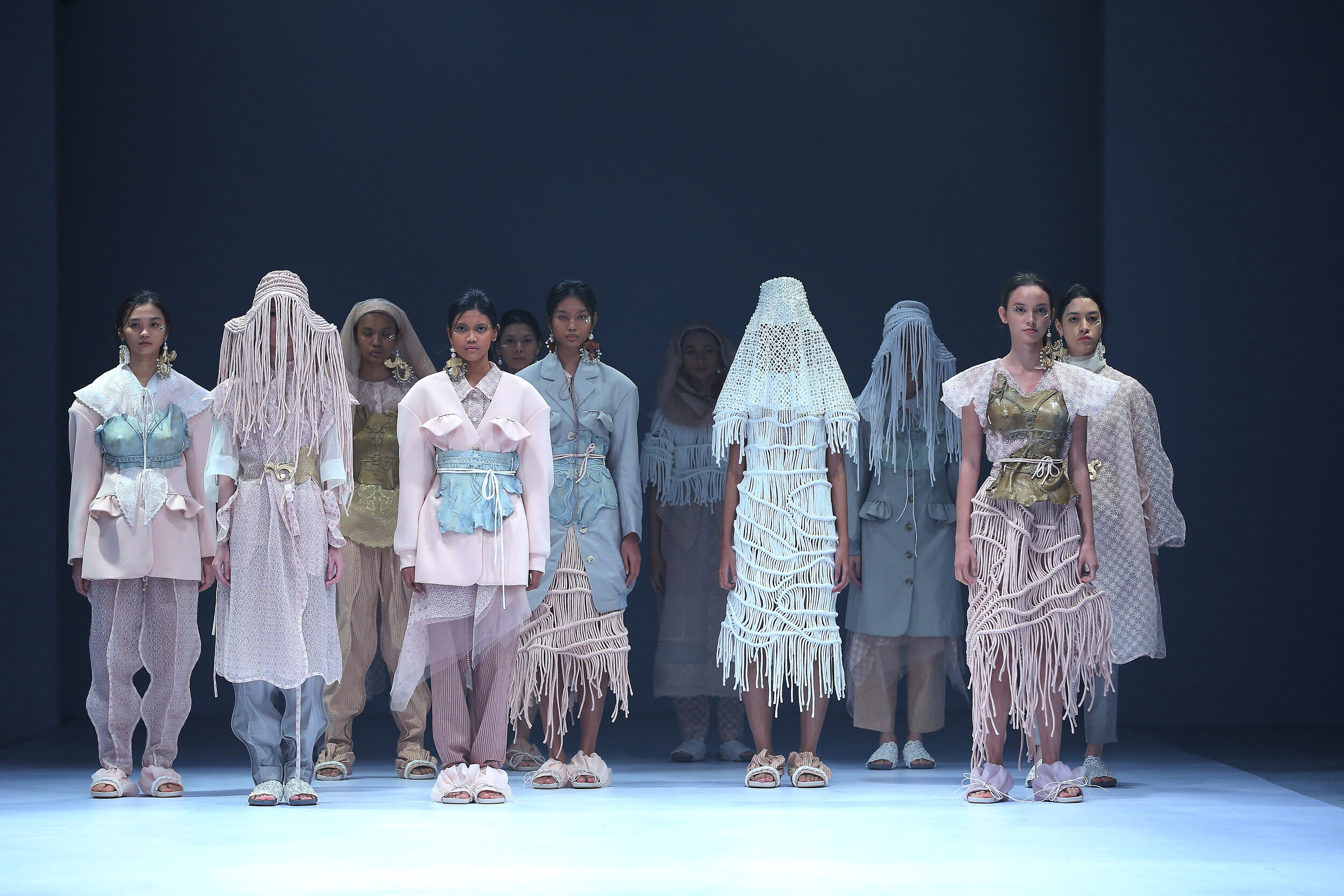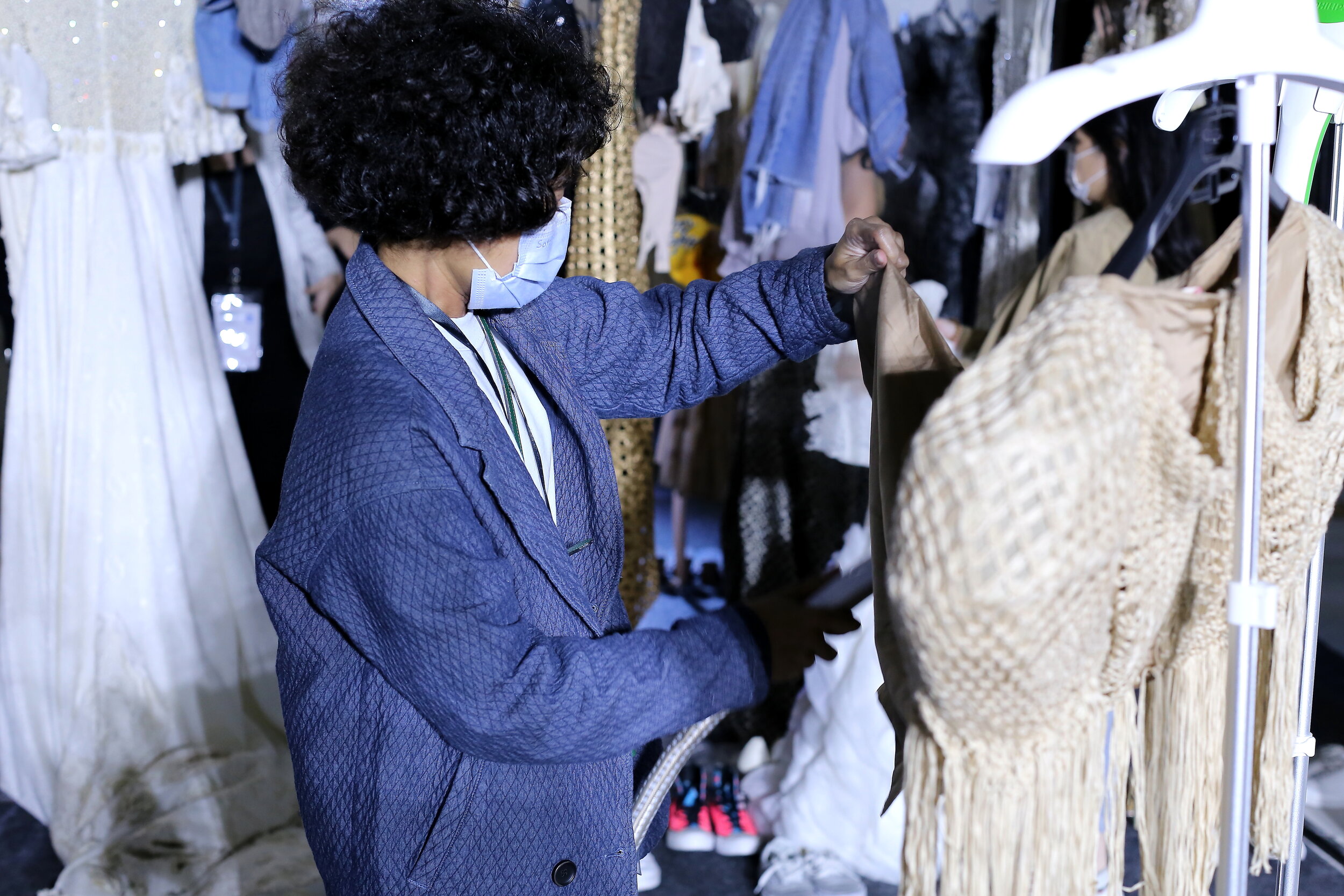Fashion show must go on, but with better presentation
Read in Indonesian
Toton collection courtesy of Jakarta Fashion Week 2021/Dachri Megantara
It’s hard to imagine a time when fashion shows were not streamed live. The first time was in 2008, when Alexander McQueen showed ‘Plato’s Atlantis.’ Yes, just a little over a decade ago. Before that, shows were offline and for much of its history, truly elite. Some of them were held in opulent salons, race courses, even castles. Fashion enthusiasts, unless invited to the shows, have to wait before being able to see designers’ works in magazines, trend books or television. Fashion weeks weren’t even official until 1943, when it debuted in New York. A century later, we take all this for granted.
When COVID-19 was in full swing around March, the fashion industry seriously contemplated whether there will still be fashion shows as we know it. Naturally, the same question emerged about Jakarta Fashion Week, which has been the stage for Indonesia over the past 12 years. As one of the largest fashion events in Southeast Asia, it soldiered on as a virtual event.
That the issue of resuming fashion shows was even up for debate is unlike a stubborn industry known to have adopted digital strategies very late. Celine, for example, didn’t have an e-commerce platform until 2017. It should come with little surprise that by September this year, the four fashion capitals (New York, London, Milan and Paris) were already resuming physical fashion shows with live audience. It was clear how little their success was in innovating.
Chanel, Dior and Balmain staged their usual colossal shows, with large audience physically seated 1 metre apart. Others attempted something different: Miu Miu held a stadium-like runway and screened all of its viewers; Mugler created an Instagram-relevant fashion film; Moschino held a puppet show. Despite being a minority, these brands have set the blueprint for new models of showing clothes.
Because it was scheduled as the last of the series, JFW had a lot to learn. Aside from international fashion weeks, there were other local events it could learn from—Nusantara Fashion Festival in August and Indonesia Fashion Week just two weeks before. JFW has always live-streamed its shows.
This means digitalisation is nothing new, but this was the first time the format was completely overhauled: an audience-less runway show was streamed on YouTube. It was a commendable attempt of adaptation, and this achievement should not go unnoticed.
There was a solid list of sponsors; it even created the ‘See Now, Buy Now’ innovation in collaboration with Lazada. There’s room for improvement, but this applies to all digital presentations.
This time, JFW shows were pre-recorded by fashion videographers - credited as visual art directors -, which was logistically challenging. “We were missing some of the necessary equipment because there were obvious budget and space constraints,” said one director who wished to remain anonymous.
“In some cases, I was told to get everything in one take, so the pressure was high. But each show called for a different method of production; it was not a one-size-fits-all solution. The entire process felt very rushed, the meetings perhaps could have been more efficient, but it was all natural for an experimental format being realised for the very first time. We were figuring things along the way and learned a lot.”
Whether clothes were more visible or not was one thing—this format had the potential to communicate more meaningful narratives. This was apparent at the Dewi Fashion Knights (DFK) show. Sejauh Mata Memandang’s presentation directed by Davy Linggar was divided into two segments: a 4-minute segment on a set in a factory and a 2-minute segment on the JFW runway. A sneak-peek into the clothing production was beautiful and fully communicated the brand’s story.
Hilarius Jason Pratana captured Toton’s collection in his alluring presentations with the addition of mystical music by Svara Samsara. Lulu Lutfi Labibi, known for his artistic take on fashion, presented a mysterious short film by Bramsky with poem by Joko Pinurbo.
Lulu Lutfi Labibi collection courtesy of Jakarta Fashion Week 2021/Dachri Megantara
DFK successfully demonstrated the right things to stage a good show: solid ideas, strong artistic direction, quality clothes, good runway design, proper sequencing, exciting video editing and sound design. All three shows ignited people’s curiosity and showed just how much Indonesia has to offer.
“It’s double the work, and the load is heavier. This year is where we have to put everything on the table,” said CEO of GCM Group and Chairperson of Jakarta Fashion Week Svida Alisjahbana at a press conference. “The preparation was definitely longer. Virtual production still means full production and then standing by for the final edits to produce a prime end-product. We have several teams that have to work very closely with each other, including on the overall show concept and field production.”
She recalled that after wrapping up the last day of production, the applause was subdued, “Because we still had to imagine what all this work was going to be.” While it was harder for production, the virtual format was more convenient for the audience—but perhaps a shorter screen time can help make JFW more exciting as people’s attention spans are getting shorter.
JFW 2021 is a chance to learn. It will be very expensive, but still nothing compared to not learning anything at all-which would have been the case if the show didn’t happen at all. “The pandemic is the reason, but creativity must not stop,” Svida continued. “The role of fashion shows is to demonstrate that changes in lifestyle will bring changes to fashion. History has written that in times of pandemic, fashion adapts; depression brings about meaningful fashion.”
Image courtesy of Jakarta Fashion Week 2021/J. Fakar
Indeed, in times of crisis people look for inspiration. “We have to be optimistic. In this time we must show creativity that can deliver ideas to transform something during the pandemic into entertainment,” said Deputy of Tourism Products and Events at the Ministry of Tourism and Creative Economy Rizki Handayani Mustafa.
Both Svida and Rizki also highlighted the importance of supporting all the people and talents in fashion, particularly the designers. “Creative people don’t run out of ideas, and there are a lot of lessons to be learned here. We must support them.”
In a world so desperate to go full speed ahead, it is important to remember that process needs to happen, and that requires time. Witnessing and being part of something new is what makes the fashion world go round. Imagine if JFW didn’t happen. Imagine if fashion shows became a thing of the past.
Think of all the people who would be losing not only their jobs, but all the human connections that events like this can provide. Fashion is pretentious, exploitative, but it’s also driven by true grit and passion—the positive stuff we should provide more room for. Things cannot be as they were before. The coronavirus pandemic must be a turning point for the fashion industry, one that reminds us: there is no excuse to not try to do better.












